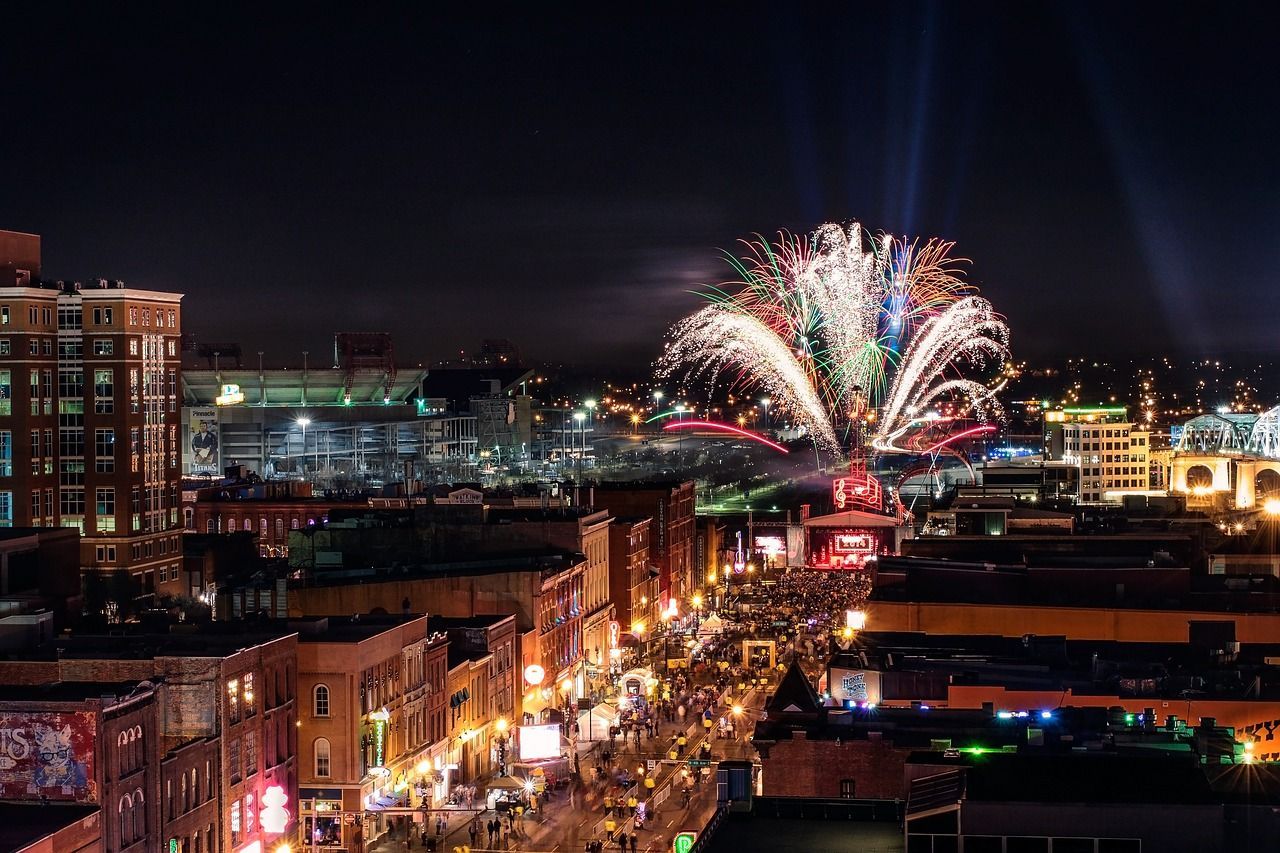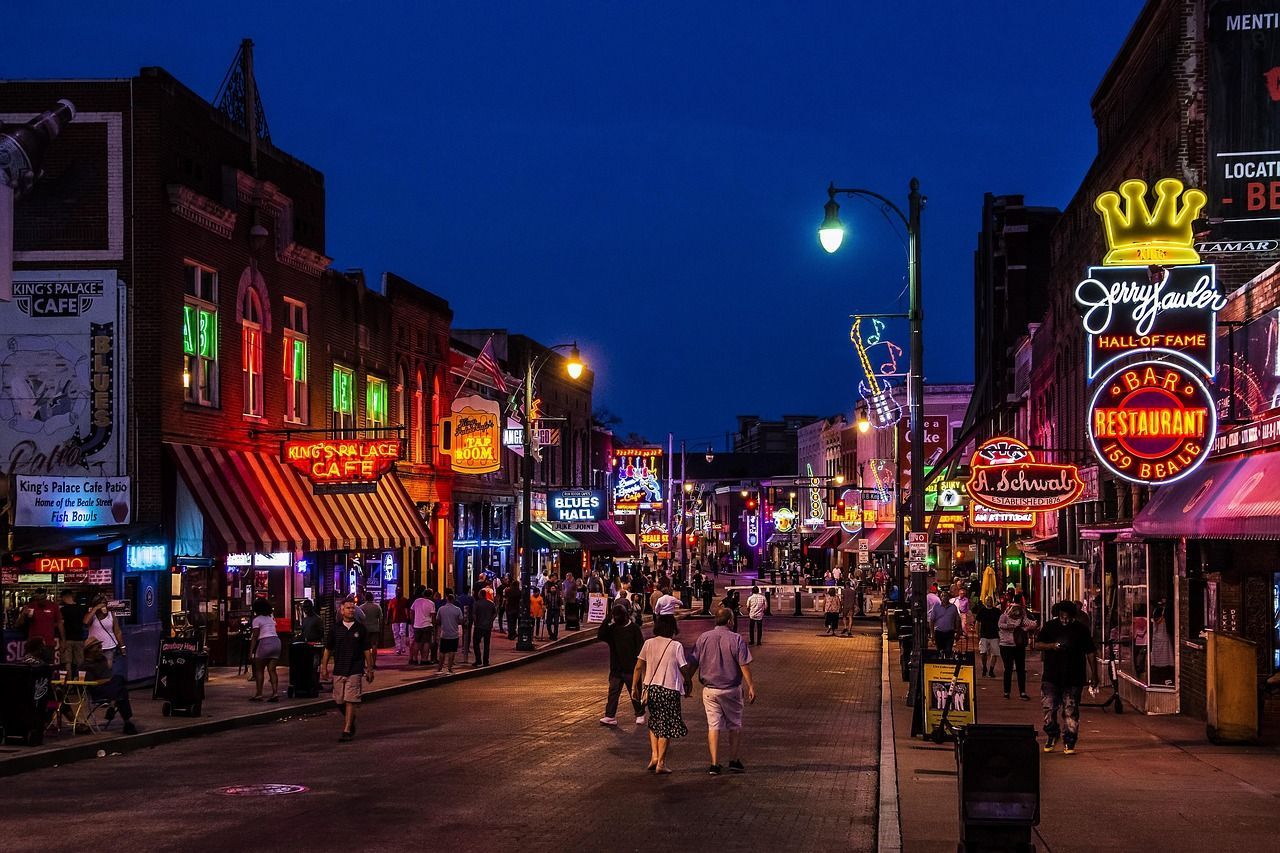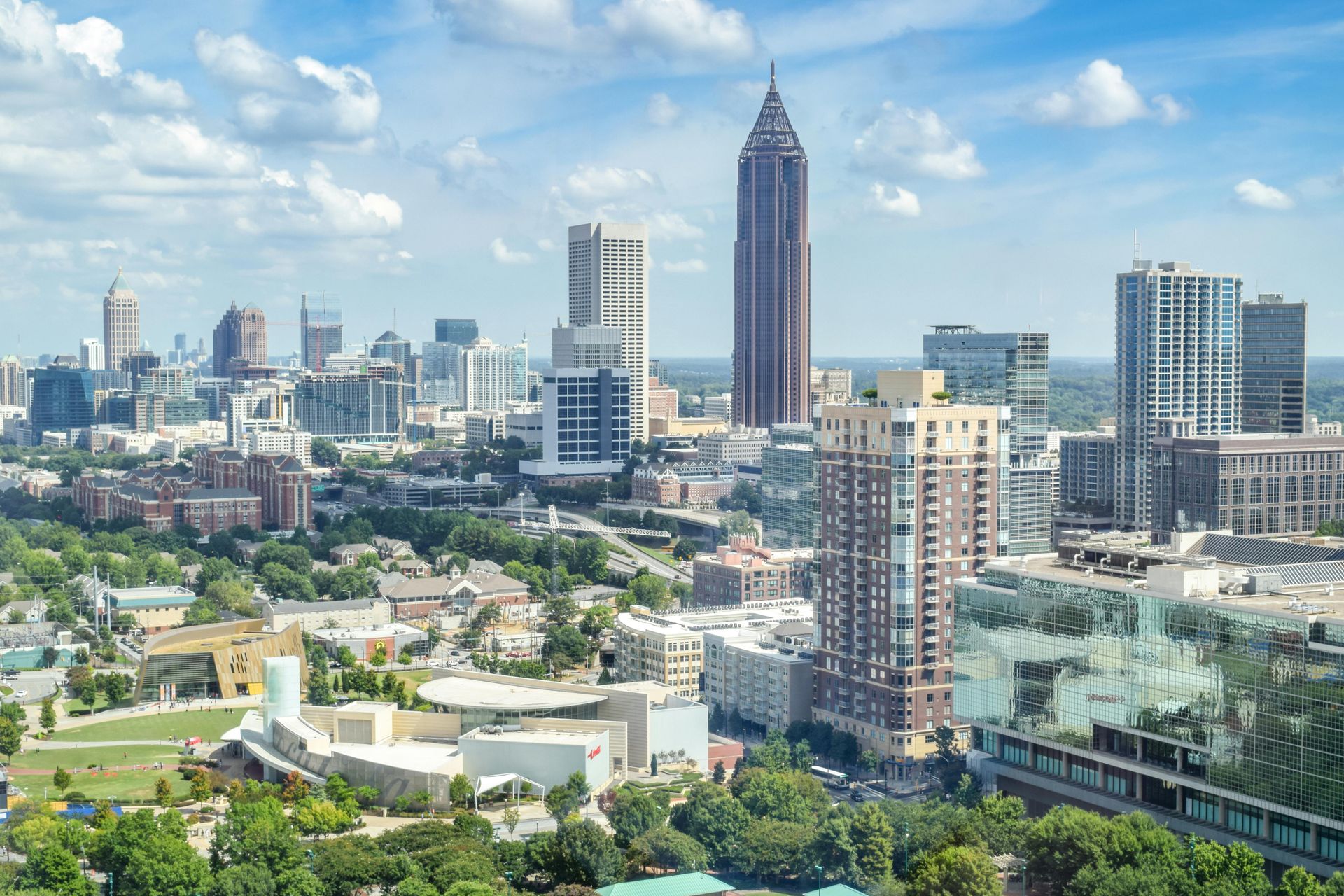The recent surge in popularity of South Korean media across the globe has led to a considerable increase in interest in the Korean capital as a holiday destination.
Fans from across the world are looking to take a dream vacation to the home of BTS or visit the familiar locations of Squid Game.
However, as a destination that is still emerging, many visitors are often left unsure of just what to do in the city when they arrive. That is why, today we will be looking at the 10 best things to do in Seoul, to ensure you can enjoy every second of your trip.
With its vibrant culture and rich history, Seoul has tons to offer even those who have no interest in K-pop or K-dramas.
With traditional architecture nestled amongst glistening skyscrapers, exceptional cuisine, and fascinating heritage, you won’t have a moment to be bored in Seoul. Sprawling across a mountain range and bisected by the Han river, Seoul boasts a stunning natural landscape too.
It’s the perfect blend of modern innovation and natural wonder and serenity. So, if you truly want to make the most of your time when you visit Seoul, this is the article for you.
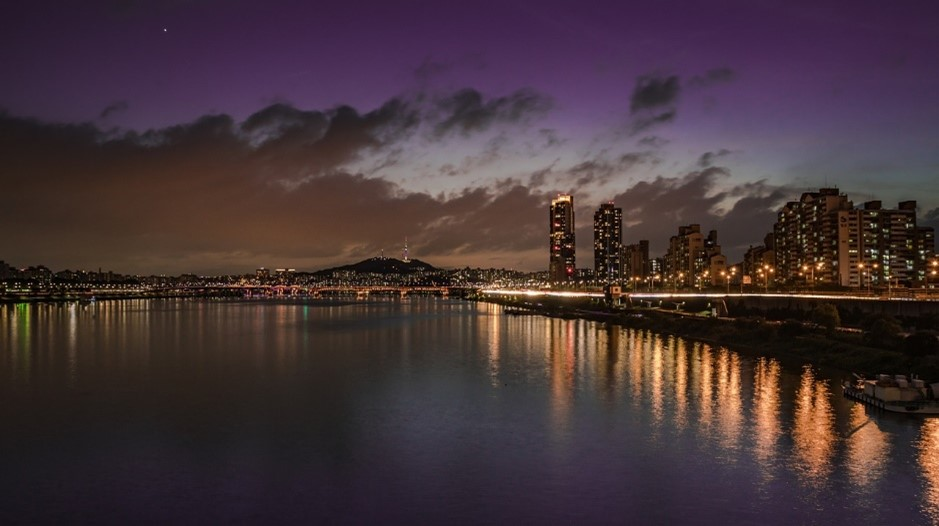
Seoul At A Glance
Known to have been settled as far back as 4000 B.C, modern Seoul has grown into a sprawling metropolis covering an area of 605 square kilometres (233.5 square miles), which is home to almost 10 million people.
Seoul’s population density is around 16,000 people per square kilometre (42,000 per square mile), making it the 46th most densely populated city in the world. The current capital of South Korea, Seoul has been the capital of various nations and dynasties throughout its history.
Seoul is surrounded by mountains which provide a natural defensive barrier and a great vantage point for the surrounding landscape. Combined with the massive Han river which runs through the city, the area would have been prime real estate for ancient civilisations.
In modern times, Seoul is a global centre for technology and business. Home to top corporations in the world, including Samsung and Hyundai, Seoul is increasingly fashionable amongst the global elite.
In fact, the city consistently ranks in the top ten most expensive cities in the world to live.
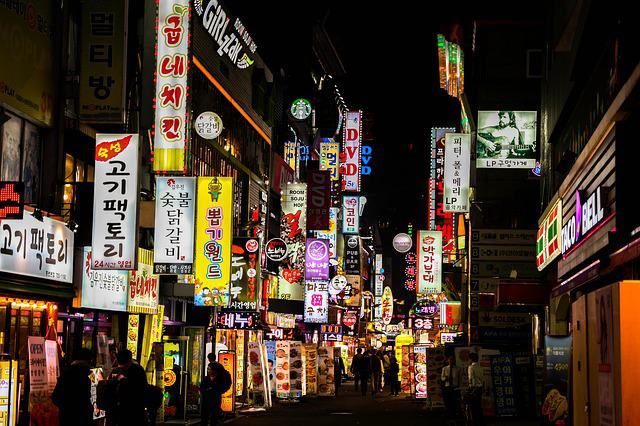
Best Time To Visit Seoul
Seoul has very distinct seasons, with searing summers and frigid winters, so the time of year that you visit in can make all the difference to your trip. Personally, I would suggest you avoid the winter. From December through February the temperatures linger around freezing.
The springtime is always lovely when the weather starts to warm up around April. If you time it right, you may even be lucky enough to catch the cherry blossoms blooming.
Autumn also boasts spectacular natural displays. October holds onto the last of the summer warmth as the city turns golden with the fall foliage of thousands of ginkgo trees.
You will want to try to avoid monsoon season, which lasts around a month in the summer. Typically, monsoon season starts around June, so the best time to visit Seoul to make the most of the balmy summer weather is August or early September.
Although it can get sizzlingly hot and impressively humid, pretty much every shop, restaurant, and café has air-conditioning. If you struggle with the heat, you will have plenty of opportunities to duck inside for a breath of chilled air.
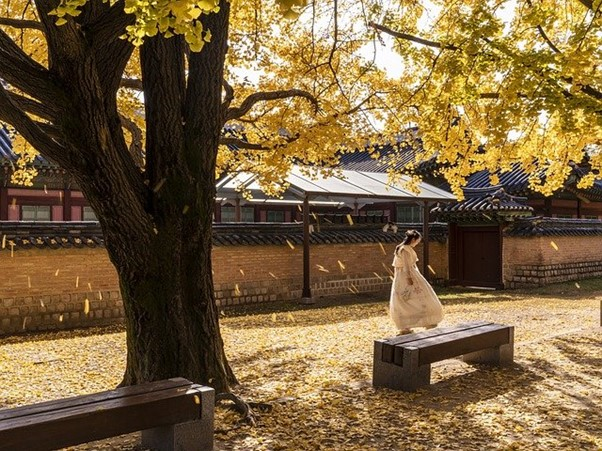
Best things To do In Seoul
Although the city is packed with exceptional attractions, I have managed to narrow it down to the 10 best things to do in Seoul. There are attractions to appeal to all travellers, giving you a thorough introduction to Seoul and all it has to offer.
Step Back In Time At Gyeongbokgung Palace
Sprawling Gyeongbokgung boasts a history that dates back to the 14th century. Built for the ruling Joseon dynasty in 1395, the Gyeongbokgung Palace is a complex of various independent buildings and gardens.
Although many of the original buidlings were left in ruin by Japanese invaders in the 16th century, they were painstakingly reconstructed to their original design in the mid 1800s.
The architecture, intricate decorations and murals, building placements, and furnishings are all as they would have been in the 1300s.
The palace is also a popular place for young girls and couples to take photos in traditional Korean dress. Seeing people milling around in hanbok really adds to the historical vibe.
You can wander around the old library, peer into the royal living quarters and throne chamber, and wonder at the beautiful pagodas. Between the buildings, you can appreciate lush gardens, ponds, and summer pavilions on little islands.
If the many features of Gyeongbokgung itself are not enough for you, there are also two museums on the palace grounds.
The National Palace Museum of Korea is located by the main entrance. It’s just before the ticket gate, so you can access this museum completely free to learn about the palace’s history.
National Folk Museum of Korea is located further north, towards the back of the palace grounds. You’ll need to pay to enter the grounds but access to the museum is no extra charge.
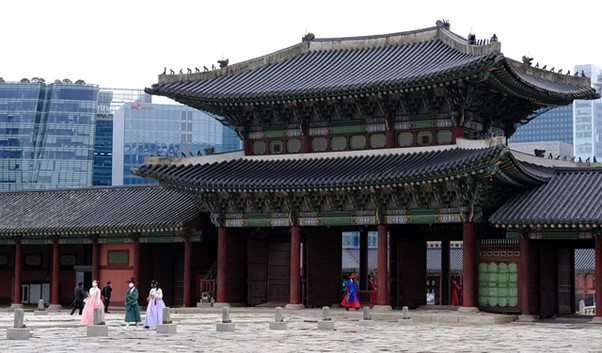
Enjoy The Modern Wonders Of CoEx Mall
CoEx, or the Starfield CoEx Mall, is a massive complex of shops, food courts, and entertainment. CoEx appears big enough from the outside but is even more impressive when you realise that most of the mall is located underground.
Within CoEx you will find hundreds of shops, cafes, restaurants, a cinema, and even an aquarium. There are exhibition spaces located around the centre hosting various events and displays, many of which are free to enter.
One of the focal points of CoEx is its huge library. The Starfield Library at the centre of CoEx is home to 50,000 books, and entirely open to the public. There are plenty of chairs and tables where you’ll often see people working and studying, surrounded by towers of books.
CoEx is literally just across the road from the lovely Bongeunsa Temple. It’s conveniently located to allow you both cultural and commercial enrichment in a single afternoon.
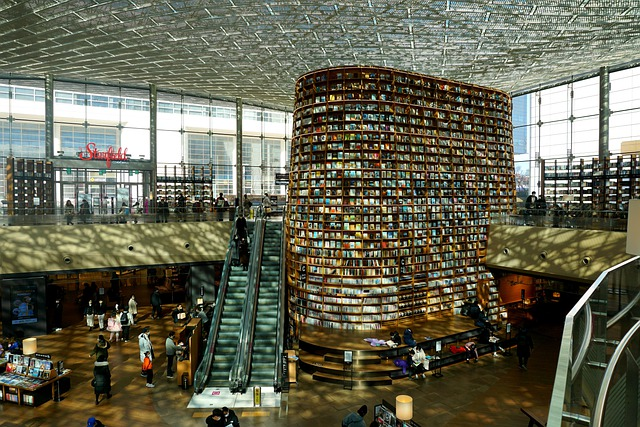
Lotte World
If you are visiting Seoul with kids and are looking for a family friendly place to spend the day, you should definitely consider Lotte World.
The sprawling leisure and entertainment complex contains shopping malls, sports facilities, and museums, all in one convenient location.
What really makes it notable though, is that it is home to the world’s largest indoor theme-park. The dazzling theme park contains all the rides, amusements, and food courts you could need to keep the whole family entertained.
If that’s not enough though, Lotte World also boasts another amusement park outside. The Lotte World Magi Island is located in the middle of Seokchon Lake and contains even more rides and rollercoasters to enjoy.
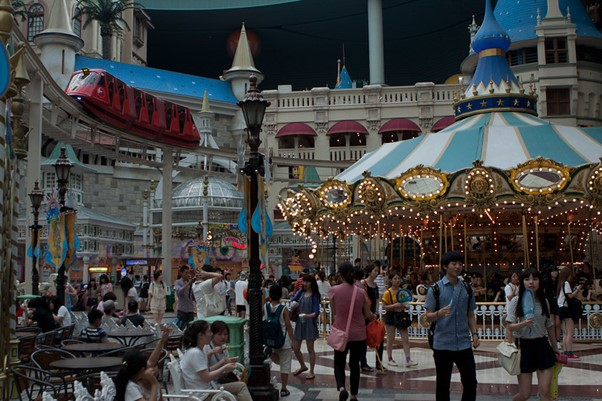
Take In The View From N Seoul Tower
Set atop the peak of Namsan Mountain in the centre of Seoul is the N. Seoul Tower. 236 metres (774 feet) tall, the N Seoul Tower can be seen from across the city.
At the top of the tower are four observation decks from which you can enjoy stunning, unobstructed views across the entirety of Seoul.
The very top observation level is actually a revolving restaurant. It’s certainly not a budget dining option, but it’s a wonderful experience for a special treat or romantic evening.
Speaking of romance, the plaza at the bottom of the tower is home to an abundance of love-locks. Couples flock to the tower to hang padlocks from the railings as a testament to their relationship.
To access the N Seoul Tower, you first have to get to the top of Namsan Mountain. You have two options to do this.
The easiest is to climb aboard the cable car that will lift you right to the top. If you are up for a bit more of a challenge, there is also a pleasant walking route that winds all the way up the mountain.
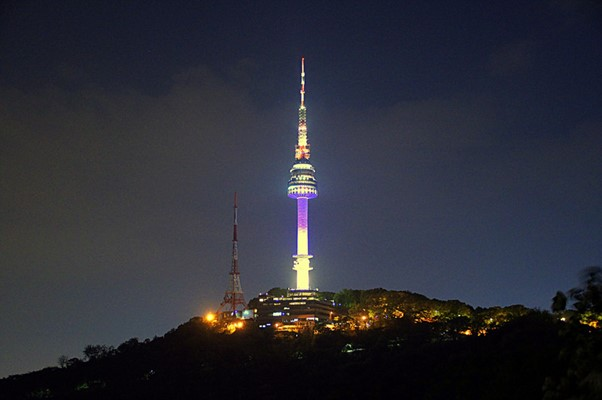
Wander Through History In Bukchon Hanok Village
For a look back into the Seoul of the past, head to Bukchon Hanok village, just east of Gyeongbokgung Palace. This area of Seoul is populated with traditional Hanok style houses, dating back to the 14th century.
The area closest to the train station is often packed with tourists. However, if you head just a little further in the crowds fade away, and you can enjoy a much more serene and authentic experience.
Virtually untouched by modernity, wandering through Bukchon is like stepping back in time. It is easy to imagine what the Seoul of centuries past would have been like as you stroll through streets lined with historic buildings.
In amongst the houses are traditional tea-shops and small museums dedicated to the history, traditions, and customs of Seoul.
If you have time to take a break, look for Cha Masineun Tteul Tea-house. The stunning, traditional tea-house serves delicious drinks and snacks with incredible views of the surrounding mountains.
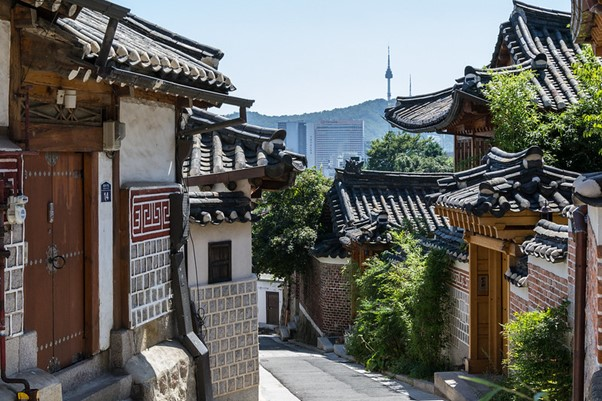
Escape Into The Tranquillity Of Bongeunsa Temple
If you need a quick break from the hustle and bustle of Seoul, Bongeunsa Temple in Gangnam is your answer. Although founded way back in the 8th century, the current iteration was constructed in the late 15th century.
The temple itself is a stunning example of traditional Korean architecture. The already colourful buildings are elaborately decorated with intricately painted rafters, vibrant lanterns, and various statues.
The temple buildings are surrounded by lush gardens full of trickling streams and beautiful flowers. Once you step into the main section of the temple, it becomes hard to believe that you are just a few steps from one of the busiest parts of Seoul.
Each spring, from late April to early May, Bongeunsa celebrates Buddha’s birthday with an annual lantern festival.
Local people and schoolchildren donate hundreds of lanterns to create a luminous display. The stars of the show are the impressive character lanterns in the shapes of various animals and Buddhist figures.
If you have a couple of days to spare, you should definitely consider a temple stay. Many temples in South Korea offer you the chance to live on the grounds for a day or two, working in the temple and experiencing daily life as a Buddhist monk.
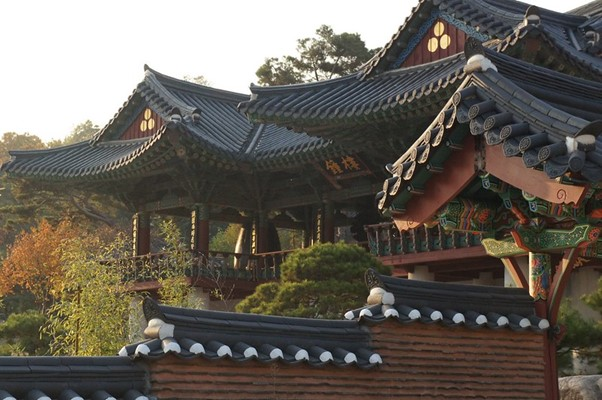
Stroll Along Cheonggyecheon Stream
Once entirely concealed beneath the Seoul streets, the Cheonggyecheon stream was uncovered in 2005 in an attempt to use the waterway to cool the inner-city area during Korea’s sweltering summers.
Since the controversial, and expensive, renewal project, the Cheonggyecheon has become a favourite location of both locals and tourists. It stretches for 11 kilometres (7 miles) from Gwanghwamun Square, just south of Gyeongbokbung Palace, all the way to the Han river.
The stream itself is home to fish, birds, and even turtles. There are various things to keep an eye out for along either side of the Cheonggyecheon.
Once, the stream was lined with ramshackle houses supported on stilts. Some of these houses have been reproduced and now loom over the stream once again.
Various events are held along the Cheonggyecheon throughout the year. From concerts to lantern displays, there’s usually something interesting to enjoy along the stream.
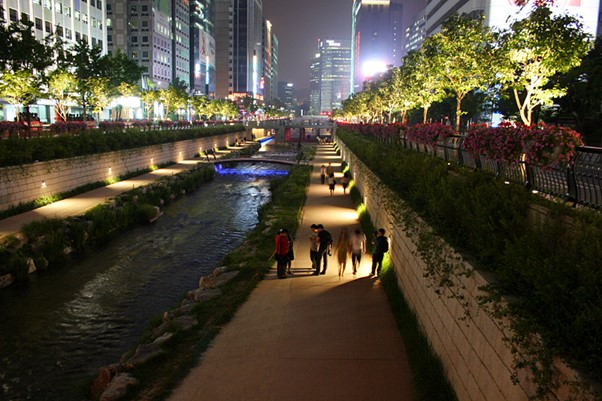
Browse The Traditional Wares Of Insadong Street
Insadong is the traditional home of Seoul’s artists. Packed with little shops selling traditional art supplies, you’ll know you’re in the right place when you see the giant paintbrush statue at the north end of Insadong Street.
Aside from art supplies, the shops along Insadong are packed with traditional crafts and artisan goods.
It’s the perfect place to pick up unique, local souvenirs and gifts. The narrow backstreets leading off of Insadong Street are lined with tiny teashops, perfect for a quiet break.
In addition to tradition, Insadong is also home to the Ssamziegil shopping centre. Rather than distinct levels, the mall consists of a spiral walkway that rises up from the central plaza, lined with small craft shops and cafes.
Ssamgiezil is full of little galleries and studios of local artists. If you want to support the work of current Seoul artists and creators, you will love Ssamgiezil.
At the south end of Insadong Street is Tapgol Park. The leafy, urban park is named for its stone pagoda, with “tap” meaning pagoda in Korean.
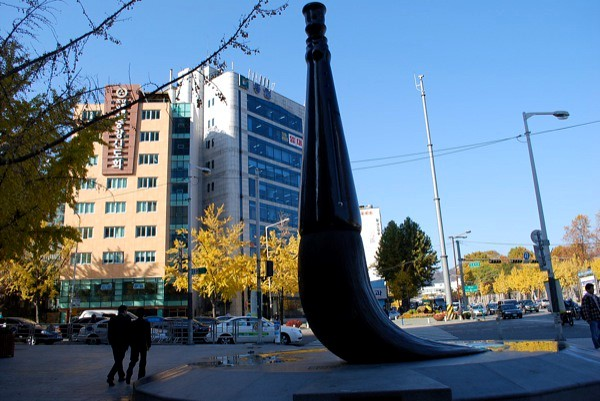
Cross The Line At The DMZ
If you have the time to take a day trip outside of Seoul, consider booking a trip to the Demilitarised Zone, aka, the DMZ.
A little over 48 kilometres (30 miles) north of Seoul, the Korean Demilitarised Zone is a strip of neutral territory running along the border between North and South Korea.
Visitors have the unique opportunity to step across the borderline between the two countries. If you want to be able to tell your friends that you’ve stepped foot in North Korea, then this is your no-risk chance.
You don’t need to worry about transportation. There are plenty of tour companies to choose from that will transport you all the way from Seoul to the DMZ and back again. Some will even pick you up directly from your hotel.
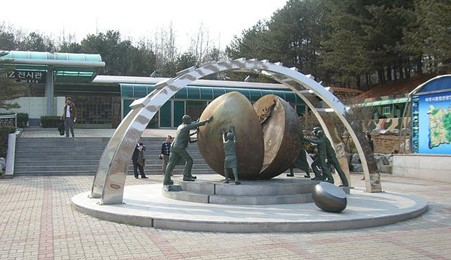
Dongdaemun Design Plaza
A centre of arts and culture within Seoul, Dongdaemun Design plaza is one of the most recognisable buildings in the city. The huge, hyper-futuristic structure resembles a spaceship sat in the middle of the city.
Within the design plaza you will find various galleries, exhibition halls, and studios. Numerous markets are held in and around the plaza, providing the perfect opportunity to pick up crafty souvenirs or indulge is delicious street food.
The design plaza is also located between Gwanghuimun and Heunginjimun, two of the remaining gates of the ancient city wall.
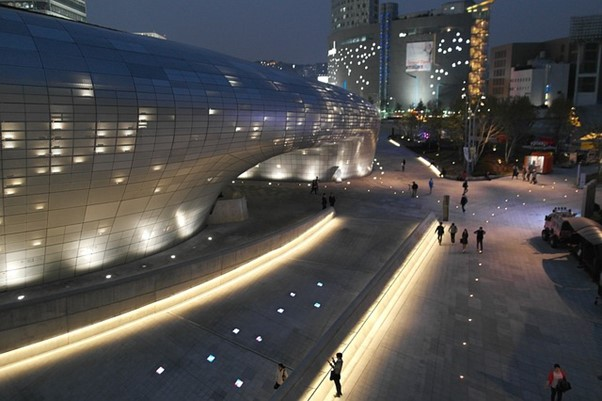
Best Hotel To Stay At In Seoul – THE PLAZA Seoul, Autograph Collection
THE PLAZA Seoul is a stunning, 5-star hotel in the heart of Seoul. Featuring exquisite modern décor and architecture, both inside and out, it is a stylish hotel that adds a sense of luxury to your trip.
Each of the beautiful rooms is designed using soft colours and is kitted out with amenities like air conditioning, automatic curtains, a large flat screen TV, tea and coffee making facilities, and soft slippers, linens, and furniture.
Free Wi-Fi is available throughout the property, while guests can also make use of the business and fitness centres, indoor pool, laundry services, free parking, and a spa complete with massage services.
There are also two restaurants on site, serving Chinese and Mediterranean cuisine, to take care of all your culinary needs during your stay.
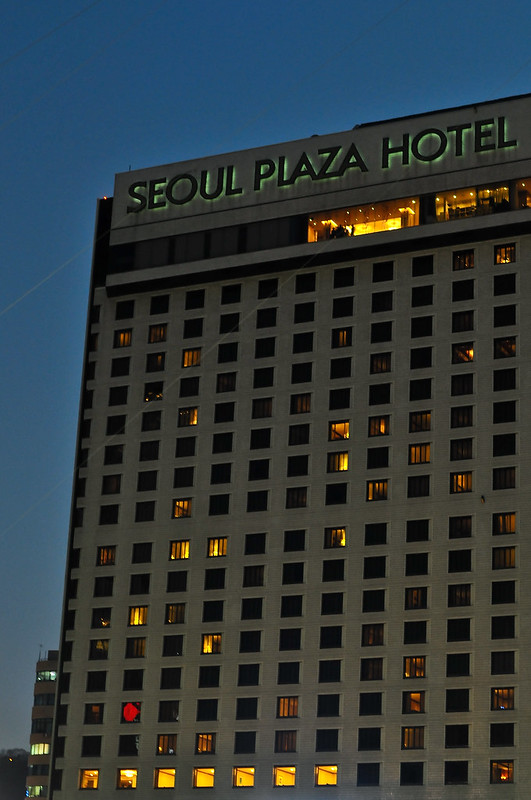
Final Thoughts
Whilst these are the 10 best things to do in Seoul, South Korea, they only scratch the surface of all there is to discover and enjoy in this vibrant city.
From seasonal festivals to amazing South Korean food and cultural activities for you to enjoy, you won’t have to worry about getting bored.
If you have a limited amount of time to spend in Seoul, then this list is a fantastic place to start. However, you will have no trouble finding plenty to fill longer vacations too. Now all you have to do is figure out where to stay in Seoul and you're on your way.
